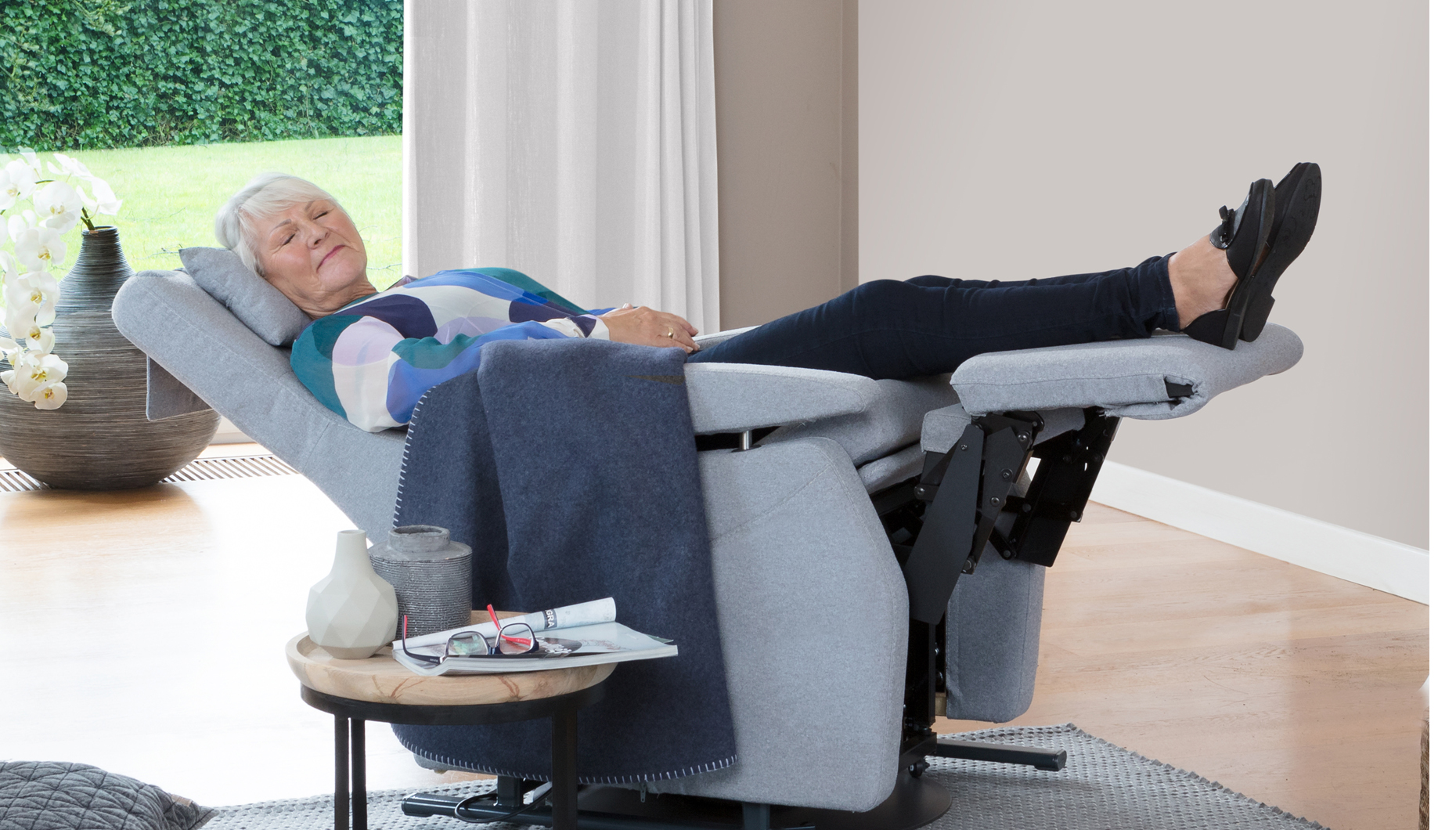The correct seat heightMany people believe it’s easier to get up out of a chair from a high sitting position. But from a high sitting position, this is just as difficult as from a low sitting position. When you occupy a high sitting position, your feet may not touch the ground. You need a great deal of strength in your arms to first move the weight of your body forwards and then stand up easily. What’s more, it’s more difficult to change your posture from a high sitting position. It can also lead to the nerves in your leg getting trapped, resulting in pins and needles and later, possibly varicose veins. In a low sitting position your back will automatically adopt a curved shape. Too low a sitting position can cause the intestines to get trapped, which in turn can cause a bloated sensation and irregular bowel movements. The correct seat height is when both legs are resting on the ground at an angle of 90°. You should be able to slide a flat hand in between the top of the back of the knee and the seat of the chair. | 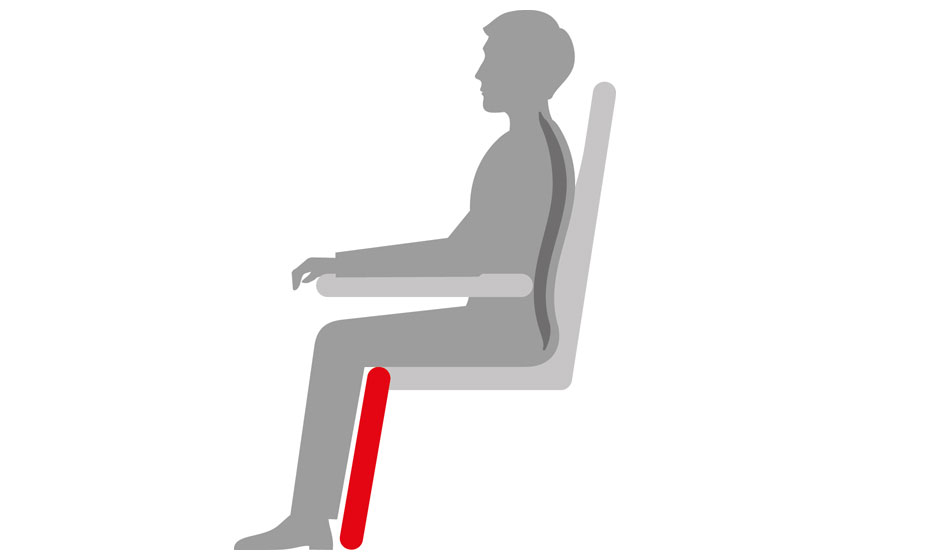 |
 | The correct seat depthThe seat depth on most sofas is 53/54 centimetres, which is far too big. Other chairs too, can have too big a seat depth. How come? The reason is because the seat depth has been determined on the basis of design, not sitting comfort. After a short while, most people tend to slouch. This results in a bent back, which makes moving your position and getting up out of the seat quite difficult. The back should always fit snugly against the base of the backrest of a chair. The seat depth is correct when you are able to slide a flat hand in between the inside of the back of the knee and the seat of the chair. |
The correct armrest heightThe arms account for no less than 10% of all bodyweight. For the arms to be at complete ease, they need to be properly supported. If the armrests are too low, an individual will automatically begin to slouch so that the arms can rest on the armrests. The result is a bent back. Too low an armrest often leads to leaning on just one of the armrests. The result is a lopsided sitting posture. If the armrests are too high, with the shoulders exaggeratedly hunched, this can lead to cramp in the neck. And if there is only one armrest, for example, on a sofa, there is a risk that over time you will always sit crookedly. When the armrests are at the correct height, the shoulders will be straight and the arms will be at an angle of 90 degrees on the armrest. | 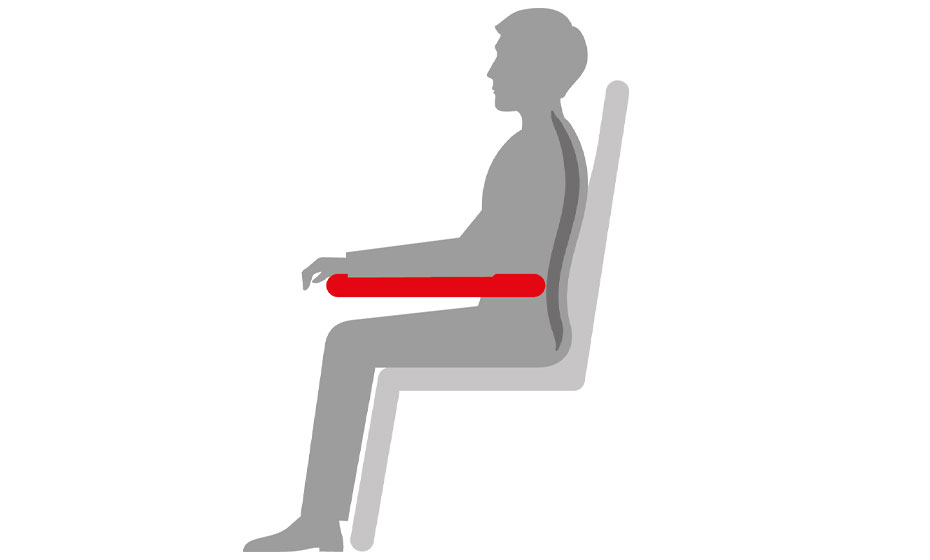 |
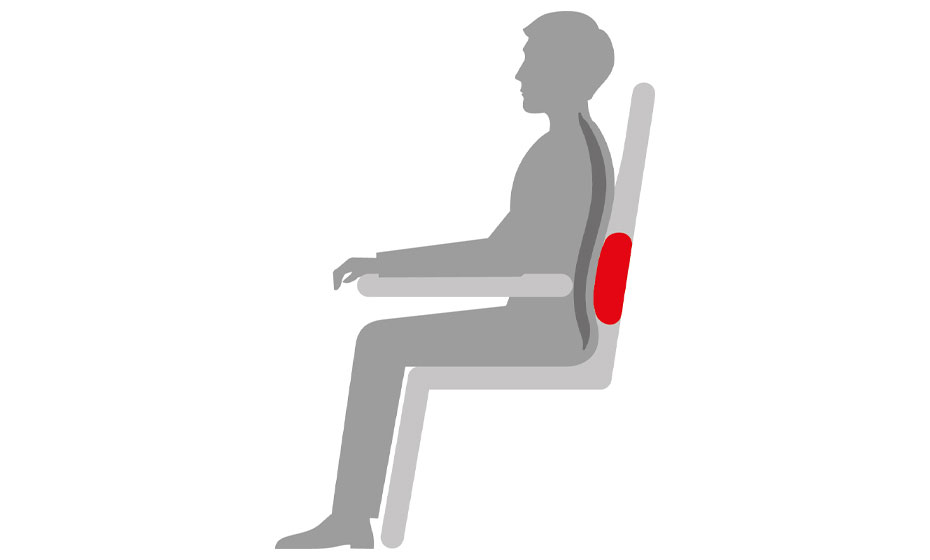 | The correct lumbar supportIt is extremely important that the lower back, also known as the lumbar region, is properly supported. Although the curvature of everyone’s spine has a slight S-shape, every individual has a uniquely shaped spine. When you sit down, the lumbar vertebrae are put under heavy strain. This causes 70 to 80% of all backache. The curvature of the spine and the length of the torso differ significantly from person to person. For that reason, the height and the thickness of the lumbar support on a chair must be personalised. It must be possible therefore, to adjust the lumbar support to the correct height and thickness to support the individual hollow of the back. |
The correct seat angleIt is important for the chair to have the right seat angle. If the angle between the backrest and the seat is too inclined, so-called ‘shear forces’ will develop. This will cause the user of the chair to slump and the body no longer has optimum support. This effect comes about for example, on chairs on which the backrest alone can be tilted backwards. The correct seat angle has a fixed value between 95 and 105 degrees. If the backrest is tilted back any further, over time the user will start to slouch automatically.
| 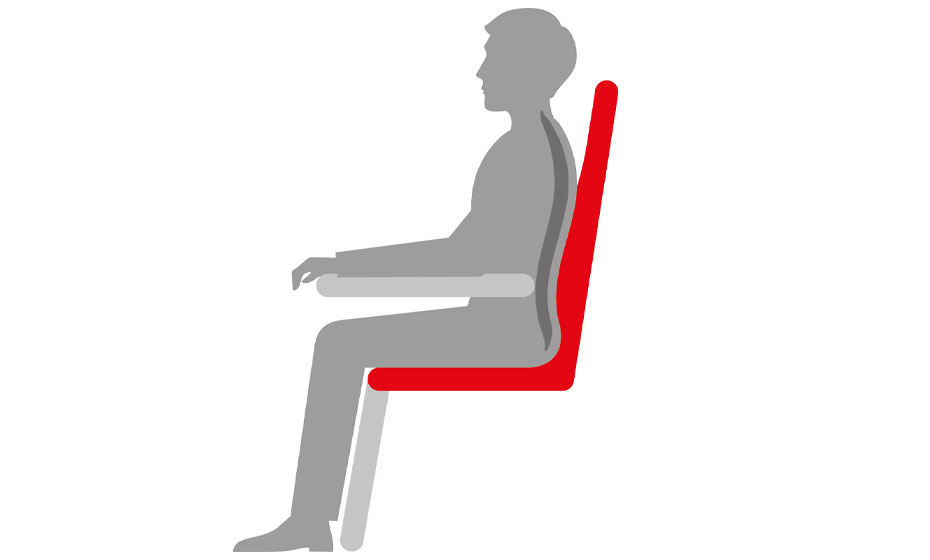 |

